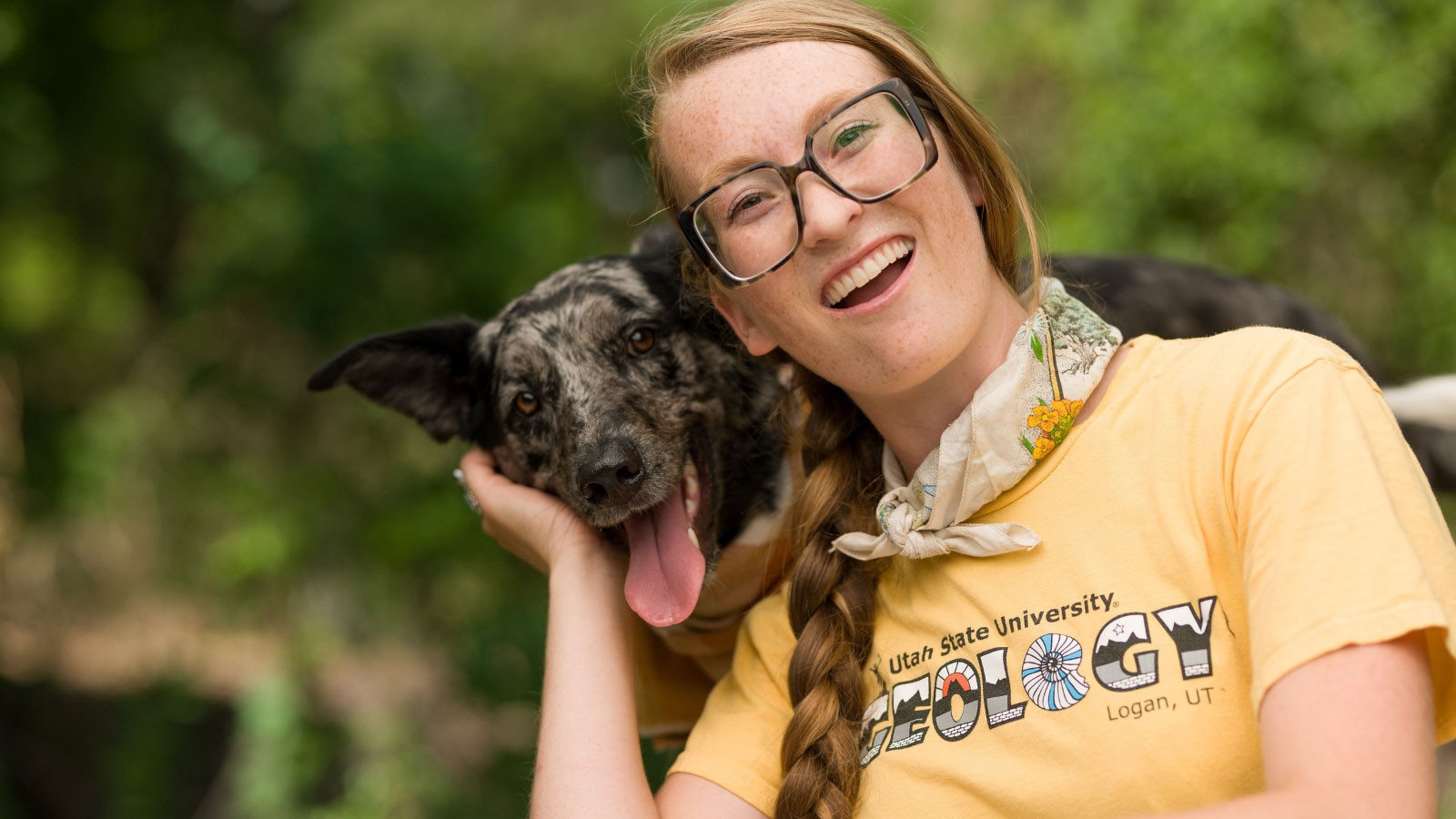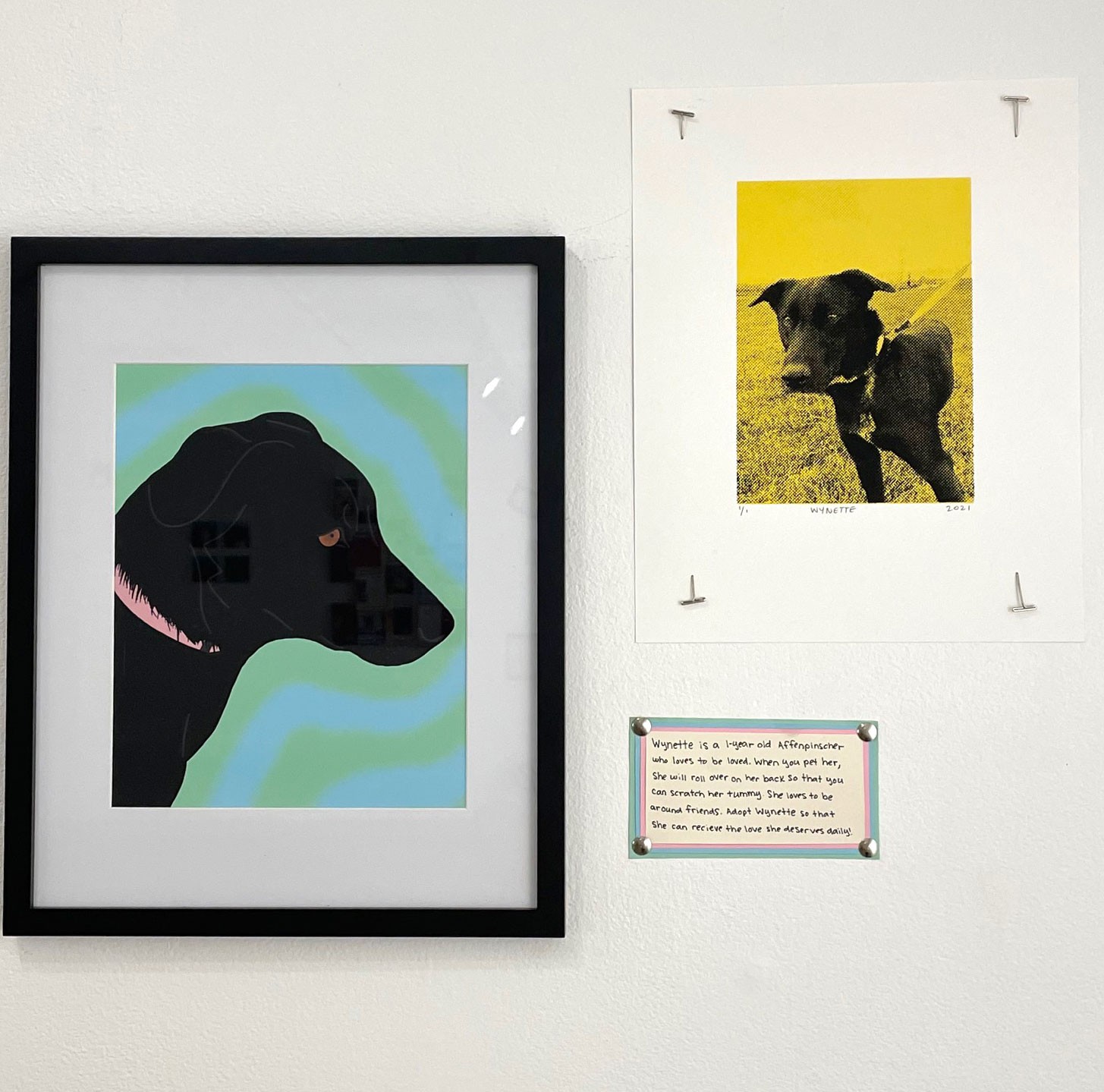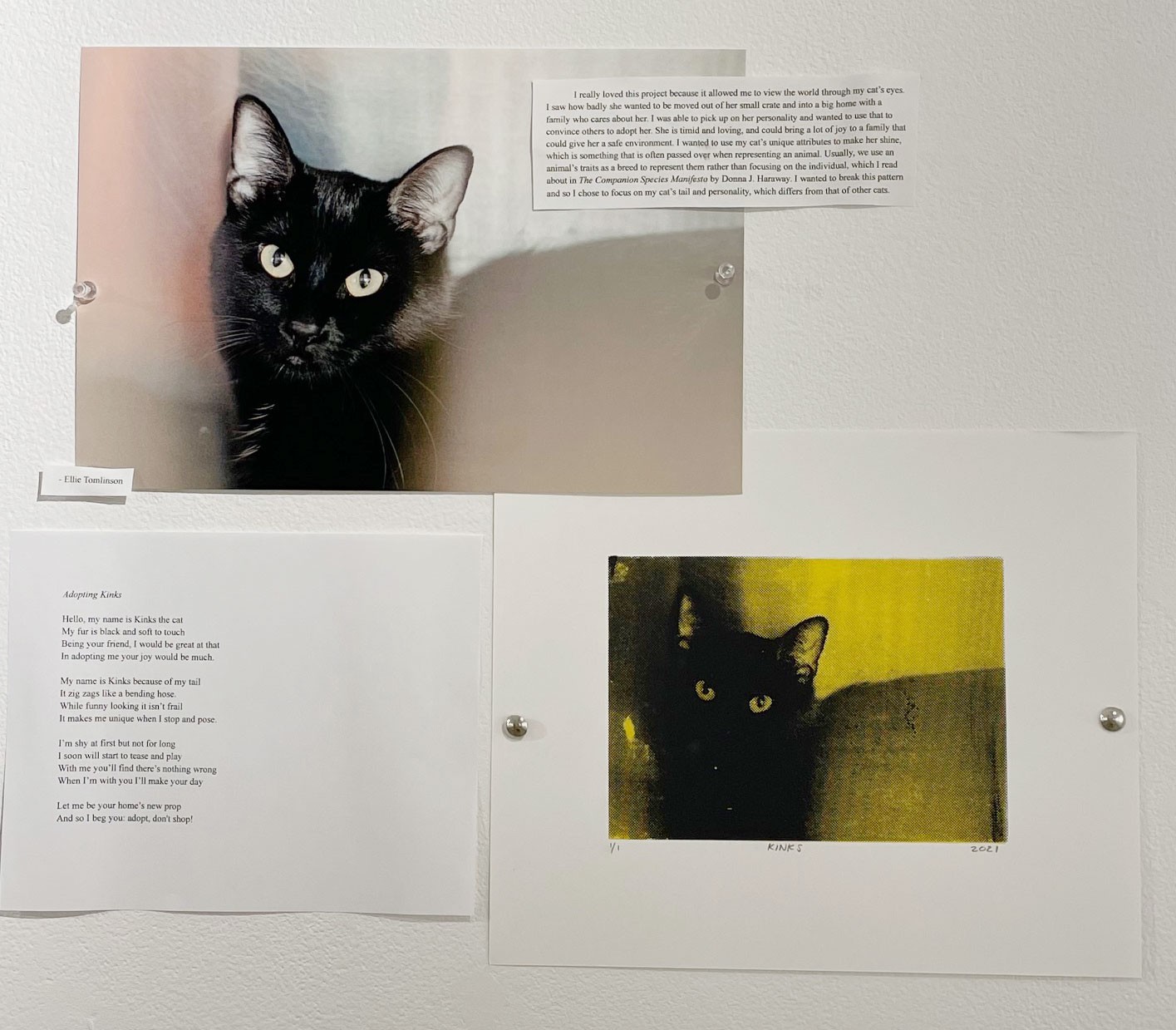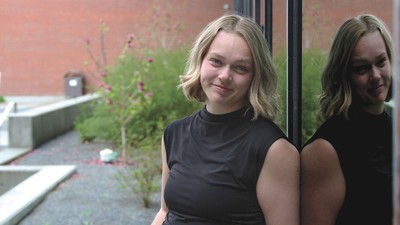USU Honors Class Helps Cache Humane Society Find Dogs Homes Through Media Representation
By Marcus Jensen |
LOGAN, Utah — During the fall 2021 semester, students in the Utah State University Honors program took up the cause of man’s best friend. Working with the Cache Humane Society, these students, who were enrolled in a Community-Engaged Learning Honors course, experimented with ways in which media representations could help dogs, and a few cats, find forever homes.
The 23 undergraduate students were part of USU’s 1330 general education course: “Civilization: Creative Arts.” The course is designed to explore different aspects of the arts and culture. As part of the course, Professor Laura Gelfand decided to change the curriculum a bit, inviting Cache Humane Society Executive Director Stacey Frisk into the class to speak with students. Gelfand said she made this change to help non-art major students take what they were learning and put it into practice.
“I started teaching the course with a focus on representations of dogs in history and in all kinds of media to help students think about how such representations often say more about the people and/or culture that produced them than they do about what they are supposed to represent,” Gelfand said. “Learning to think about these things critically is one of the key skills that we focus on in the arts and humanities.”
The students visited the Cache Humane Society, where they selected an animal to “adopt” for the purposes of the project. Students took photos of the animals, mostly dogs, and got to work on their projects. Based on what they learned in class, the students used their photos as source material to create a diverse range of representations that they believed would help get the animal adopted.
“I think that the exhibition was a really fun and cool idea,” student Thomas Nelson said. “It was fun to participate in, and it was great to have interaction with the dogs. Honestly, being with the dogs, taking pictures of them and trying to represent them was a really fun way to bring everything that we had learned into one meaningful project.”
During the class, students learned about a wide variety of topics, including prejudice against specific breeds, including pit bulls, and longstanding connections between dog breeds and racism. With this in mind, some students tackled this prejudice head on, creating artworks and poetry, social media pages, websites and other things that allowed them to promote the best aspects of “their” pets and combat prejudicial ideas. Visiting the animals in the shelter was also a source of inspiration for some students.
“I really liked being able to actually interact with the dogs at the Humane Society,” student Morgan Fisher said. “It gave me a better perspective and understanding on the conditions … shelter dogs are in and how important it is that they are positively represented to get adopted.”
Apart from helping pets find homes, students also loved how the class taught them skills and brought things out of them they didn’t know they had inside.
“I feel like the project made me grow in the areas I was lacking in — creativity and expression,” student Kendra Jackson said. “I wasn't sure I had much of these skills. But I was so surprised to see how everyone’s (project) turned out!”
As part of their project, the students installed and exhibited their representations in the Projects Gallery of the Fine Arts Visual building during the week of Thanksgiving. Gelfand also shared these representations with Frisk so that she could use them to promote the important work being done by the Cache Humane Society. Happily, most of the animals that were represented in the exhibition ended up finding a home.
“This was an extraordinary example of an opportunity to combine what could be considered fairly specialized information with real-world experience and give students a chance to put what they learned about representation, dogs, art, culture and everything else into practice,” Gelfand said.
Gelfand plans to teach the class again in the Fall 2022 semester and will incorporate student feedback to help future students navigate the assignment more smoothly.
“It was hard to know how it would all play out the first time through,” Gelfand said. “Now I have a much better sense for what worked and what didn’t work. When I teach it next fall, I hope to make it an even better experience for students."
WRITER
Marcus Jensen
News Coordinator
University Marketing and Communications
marcus.jensen@usu.edu
CONTACT
Laura Gelfand
Professor of Art History
Department of Art + Design
laura.gelfand@usu.edu
ADDITIONAL RESOURCES
Comments and questions regarding this article may be directed to the contact person listed on this page.













